
Building a brighter future:
Our progress in 2024



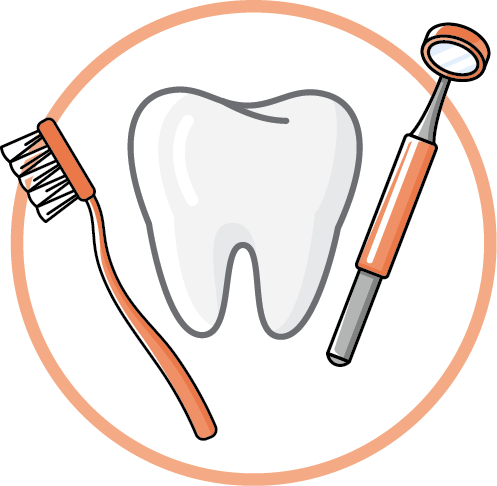


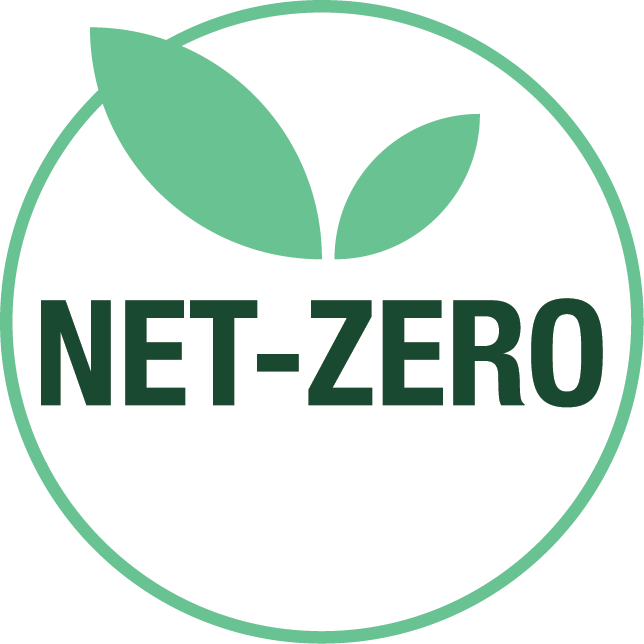
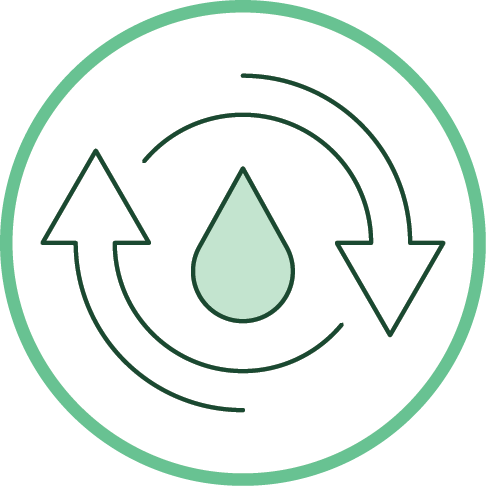

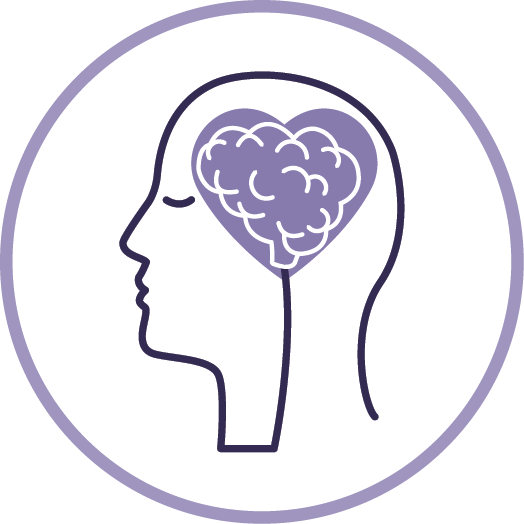




Homes for all
Homes for all
A home is more than a building. It’s a feeling of belonging, safety and opportunity. In Waterloo Region, we are tackling the affordable housing crisis to help more people and families find a home where they can build a brighter future.


Too many people in our community struggle to own or rent a home. In the Region of Waterloo, more than 45,000 residents — about 8 per cent of us — live below the poverty line. Chronic homelessness has grown an average of 28 per cent each year since 2020. But with wise investment and hard work, we can build the affordable housing our community needs.
We can end chronic homelessness. We can use land innovatively. The Region of Waterloo is building safe communities with affordable housing and good jobs for the future… homes where everyone can thrive and contribute together.
How we’ve built a brighter future in 2024:
Addressing chronic homelessness
Advancing affordable housing
Offering employment supports
Supporting economic growth
Providing community and supportive housing
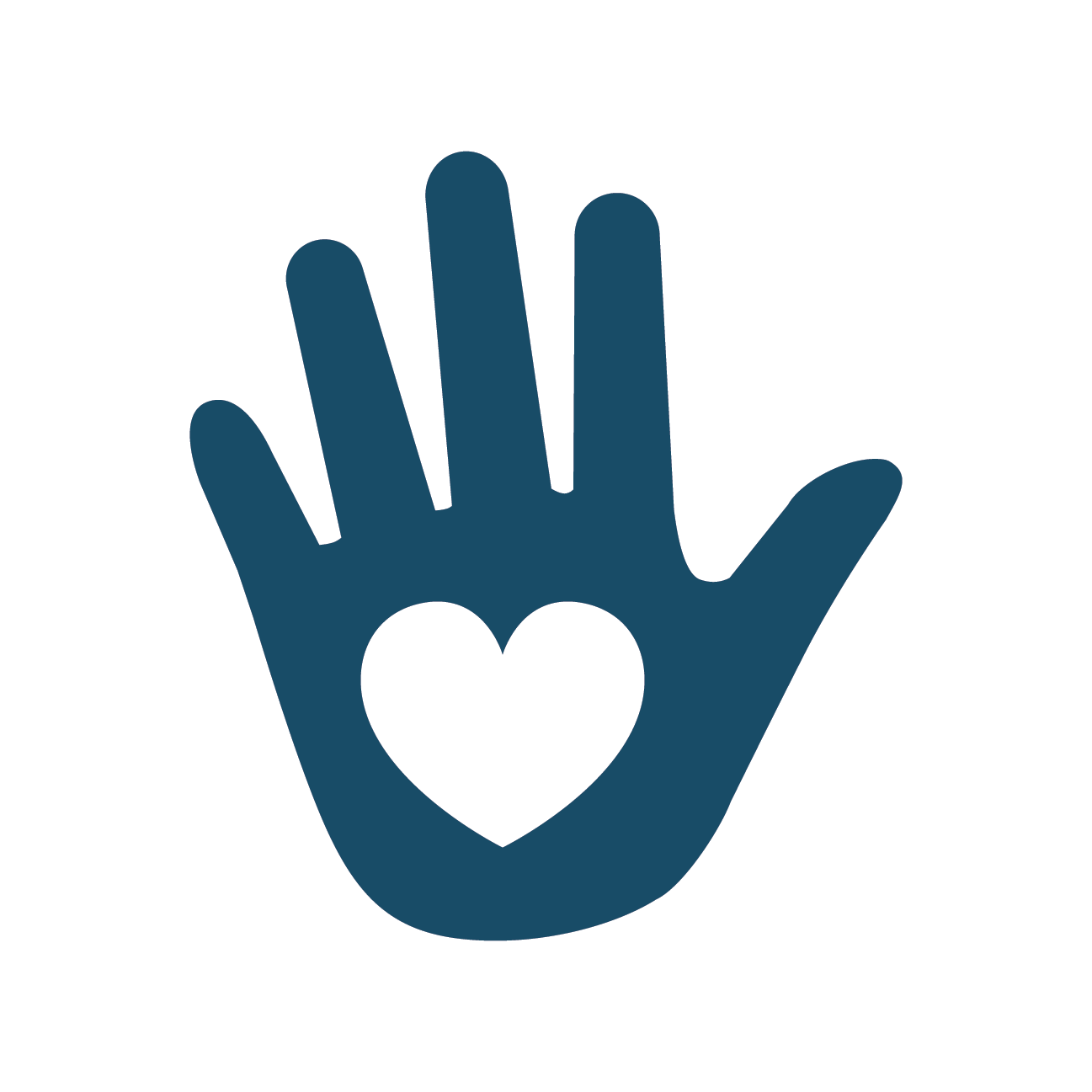
Addressing chronic homelessness


Community Partners working on the Plan to End Chronic Homelessness
Regional Council endorsed the Plan to End Chronic Homelessness in April 2024. It’s an ambitious roadmap of strategies and actions, created by 57 community partners working together. With the Plan to guide us, the Region is boldly taking action.


Aerial views of the Erb's Road Hybrid Shelter

Advancing affordable housing


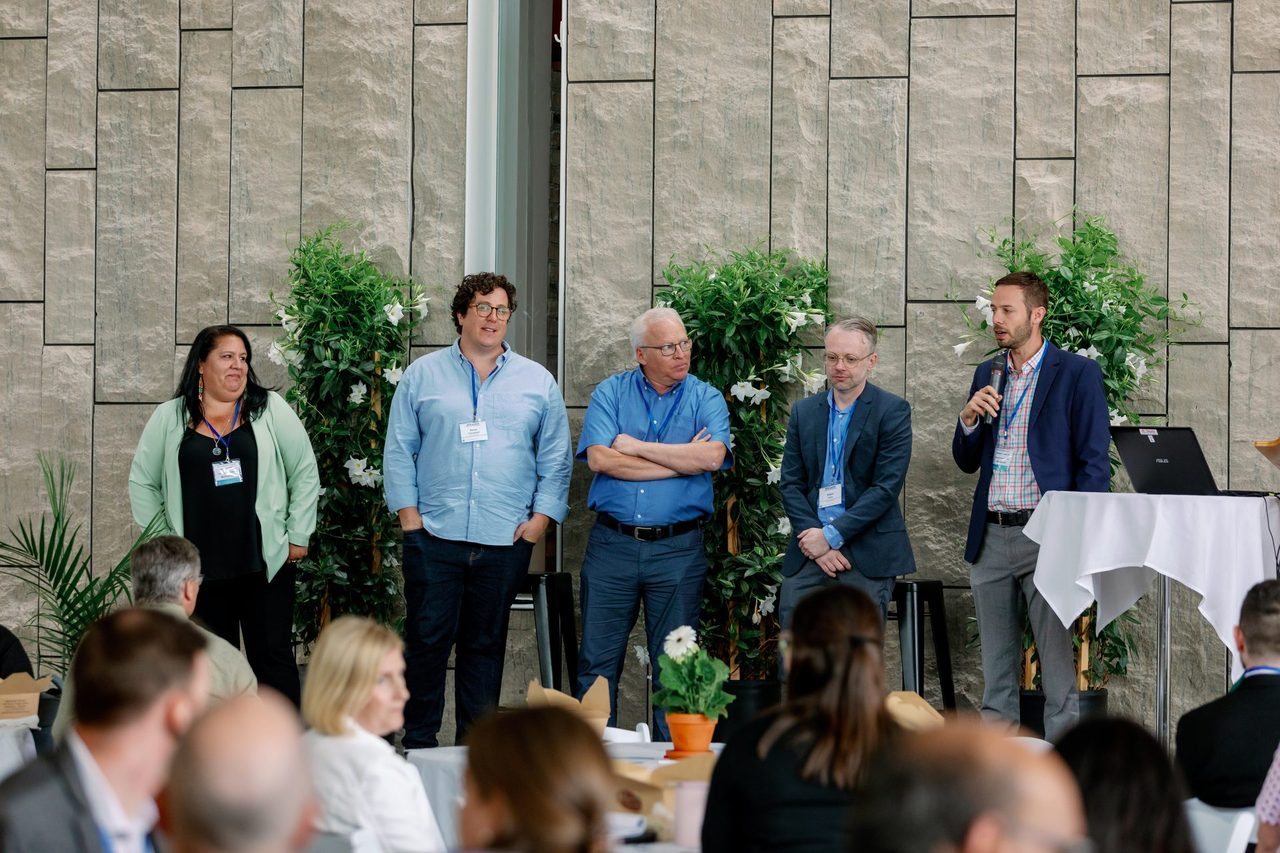

This year, we continued to address the urgent need for affordable housing. In November, we accomplished our Building Better Futures goal to add 2,500 new affordable homes — and we did it a year ahead of schedule! We’re at 2,700+ homes built or in development, and we’re not stopping there. The Region of Waterloo also hosted a Homes for All Summit in June for local housing champions to connect and find innovative solutions to get shovels in the ground on important housing projects.
In October, 30 affordable housing units opened in Cambridge for First Nations, Inuit and Métis people. This new building offers unique cultural supports for the people living there and includes indoor and outdoor space that can host cultural events and traditional ceremonies. It was built by Kitchener-Waterloo Urban Native Wigwam Project, and supported with funding from the Region of Waterloo.







Supporting economic growth

De Havilland Q-400 flight simulator
YKF is not just an airport. The Region of Waterloo International Airport is a gateway for people to travel across the world and welcome guests to our community. It’s also a hub of economic activity and home to many businesses in the aerospace industry. In June, the Waterloo Wellington Flight Centre opened a new state-of-the-art flight training facility, developed in partnership with the Waterloo Institute for Sustainable Aeronautics that houses three new flight simulators. This hub will help establish Waterloo Region as a leader in training and advanced research on sustainable aeronautics.
YKF continues to evolve as it supports jobs and economic growth in Waterloo Region.

Offering employment supports
This year, we’ve invested in new upstream solutions that provide employment opportunities and foster economic growth in the region.
Community Benefits Program: we partnered with companies building the Region’s affordable housing projects to ensure people from equity-deserving groups are hired and gain valuable construction experience working on these projects.
Pathways to Employment: We’ve also partnered with the Grand Valley Construction Association on a new program to match job seekers with training and work placements. The program opens up opportunities for people from underrepresented groups, including youth, newcomers, people with disabilities and other equity deserving groups.

66
participants completed the 5 week training in 2024
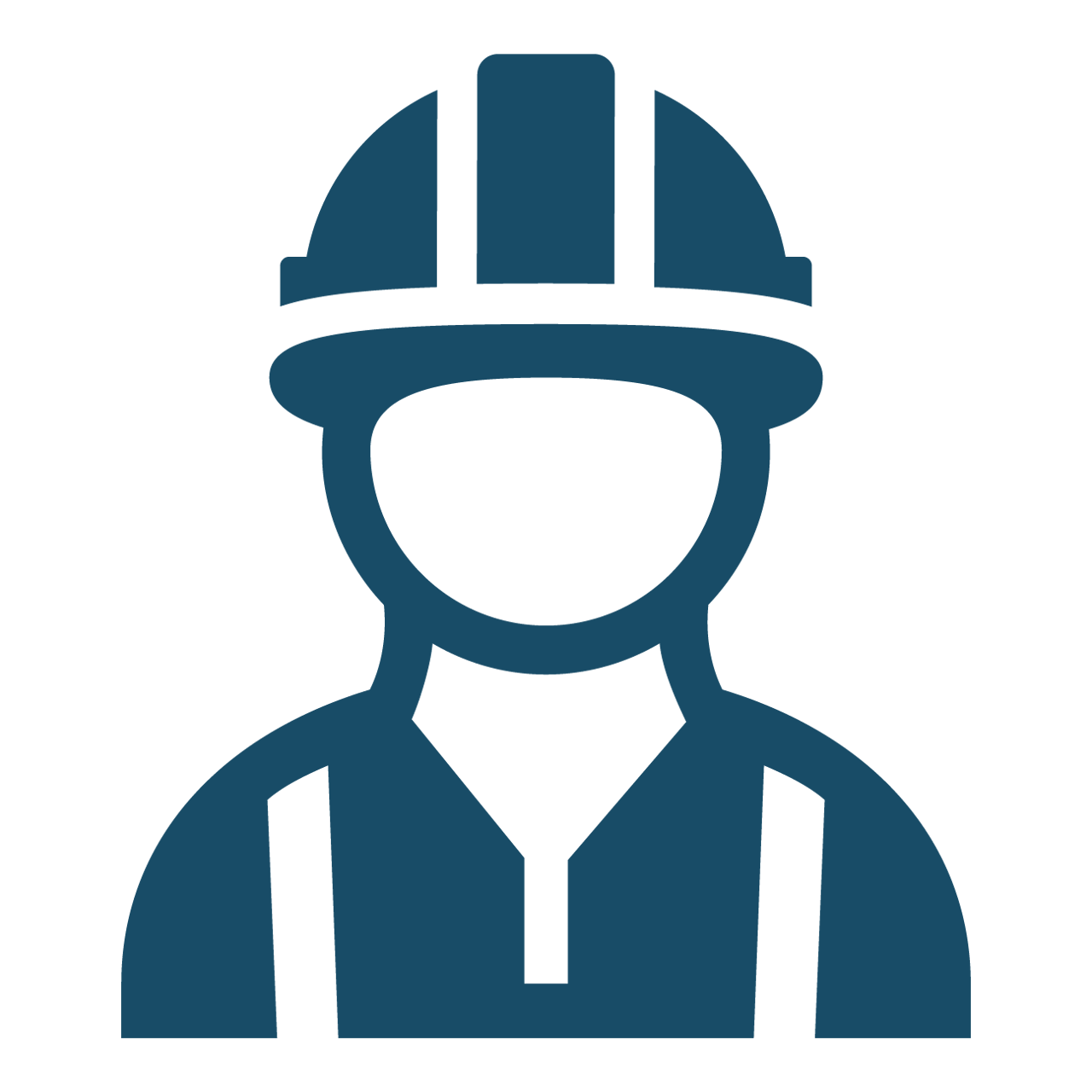
16
Out of the first 19 participants, 16 secured full-time employment following the program

Providing community and supportive housing
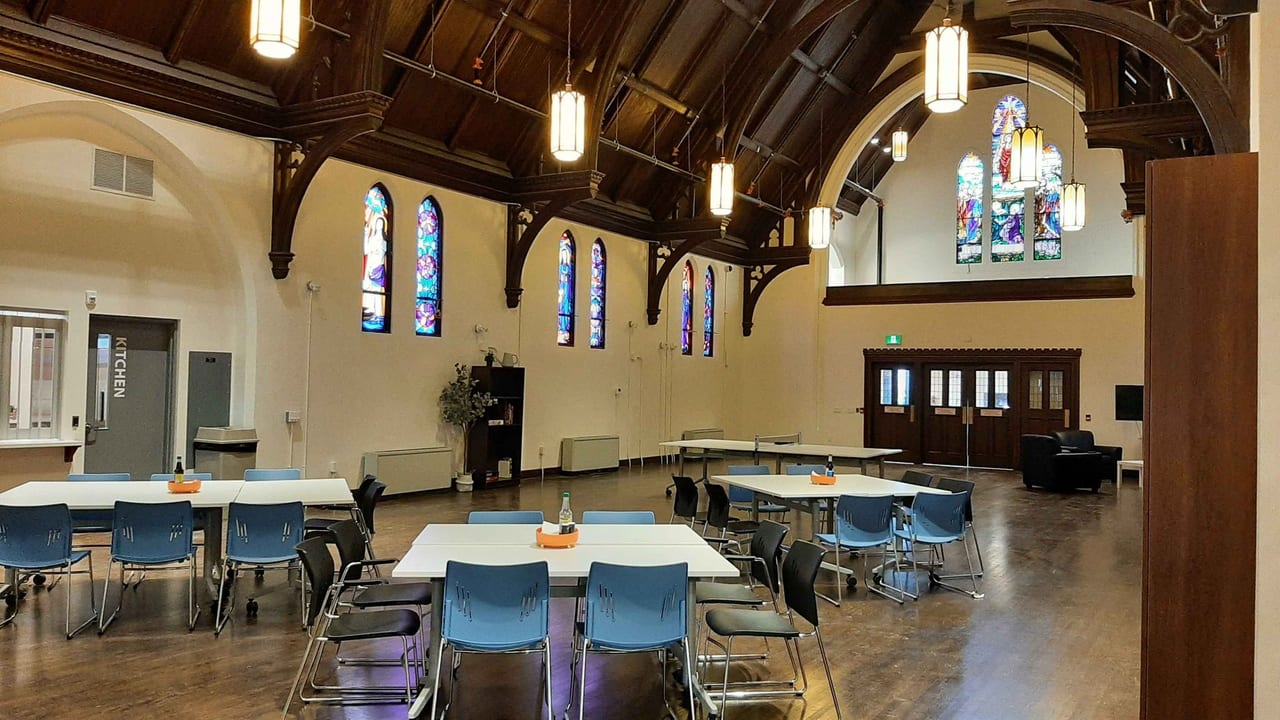
The Region of Waterloo made real progress in 2024 to add more community and supportive housing, where there are social services for people most at risk of homelessness. For example, residents at the new St. Mark’s Place benefit from cooking lessons, job search assistance and on-site health care.
In collaboration with community partners, the Region now provides:

100+
transitional housing units
760
supportive housing units


2,816
community housing units



We are also redeveloping Region owned land to add services and provide more of the homes people need — including adding childcare, community spaces, and more accessible units to these housing developments.


Equitable services and opportunities
Equitable services and opportunities
This community is growing in new, exciting ways. As we become more diverse, Waterloo Region can become stronger than ever by working alongside one another and ensuring we’re a place where everyone can thrive. |
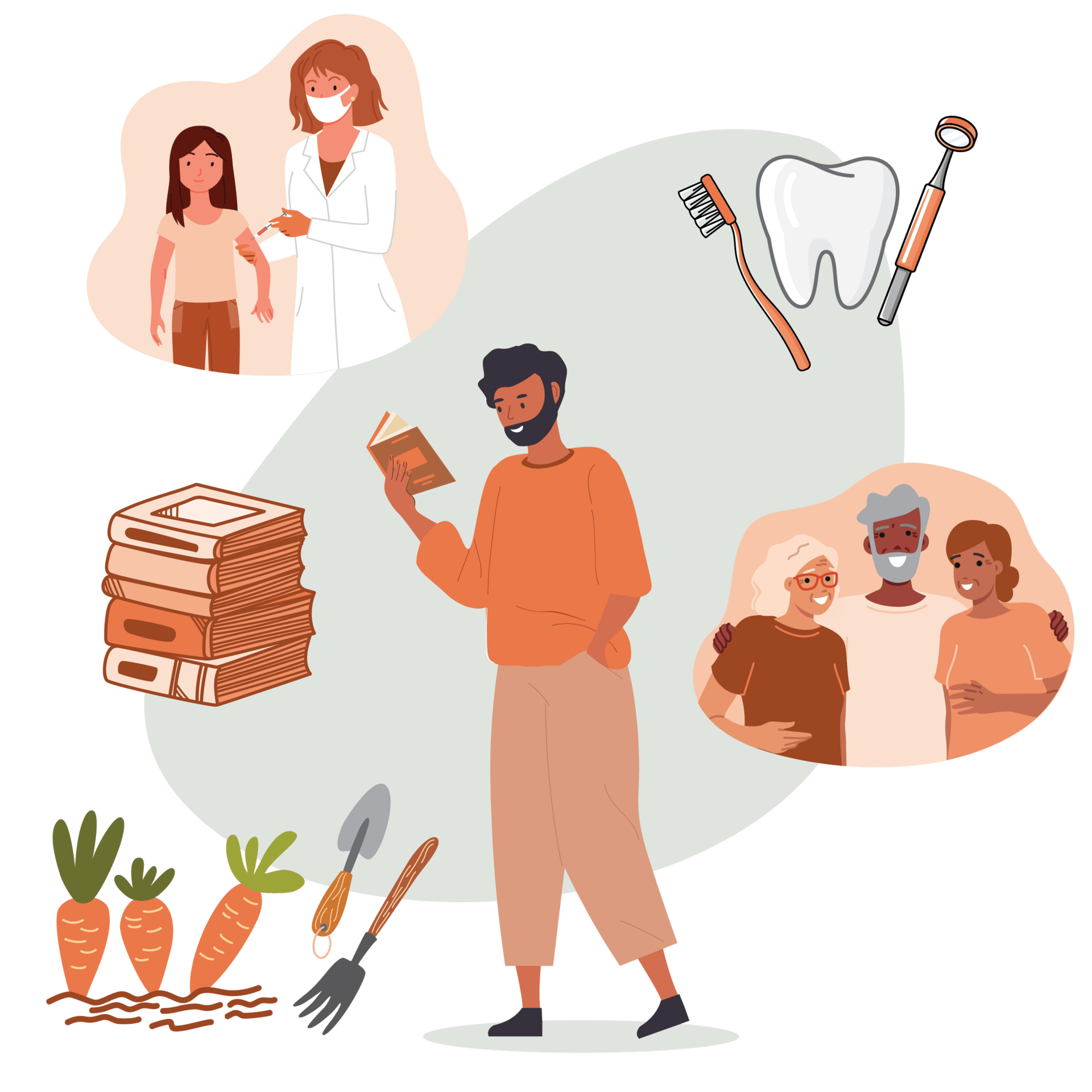

More than ever, people are coming here to enjoy what we offer and contribute to our thriving community. In 2023, the Region of Waterloo grew by 4.4 per cent — that’s like adding a city the size of Stratford. Our community is richer when we add newcomers and their unique cultures and knowledge. As our population becomes more diverse every year, we must continue to evolve how we serve people, listen to each other, and work together. By keeping people at the heart of what we do, everyone can feel safe, heard and welcomed when they call Waterloo Region home.
How we’ve built a brighter future in 2024:
Growing child care equitably
Providing connection
Sharing resources
Ensuring learning and growth for all
Supporting healthy communities
Advancing community safety and wellbeing
Investing in food security

Growing child care equitably
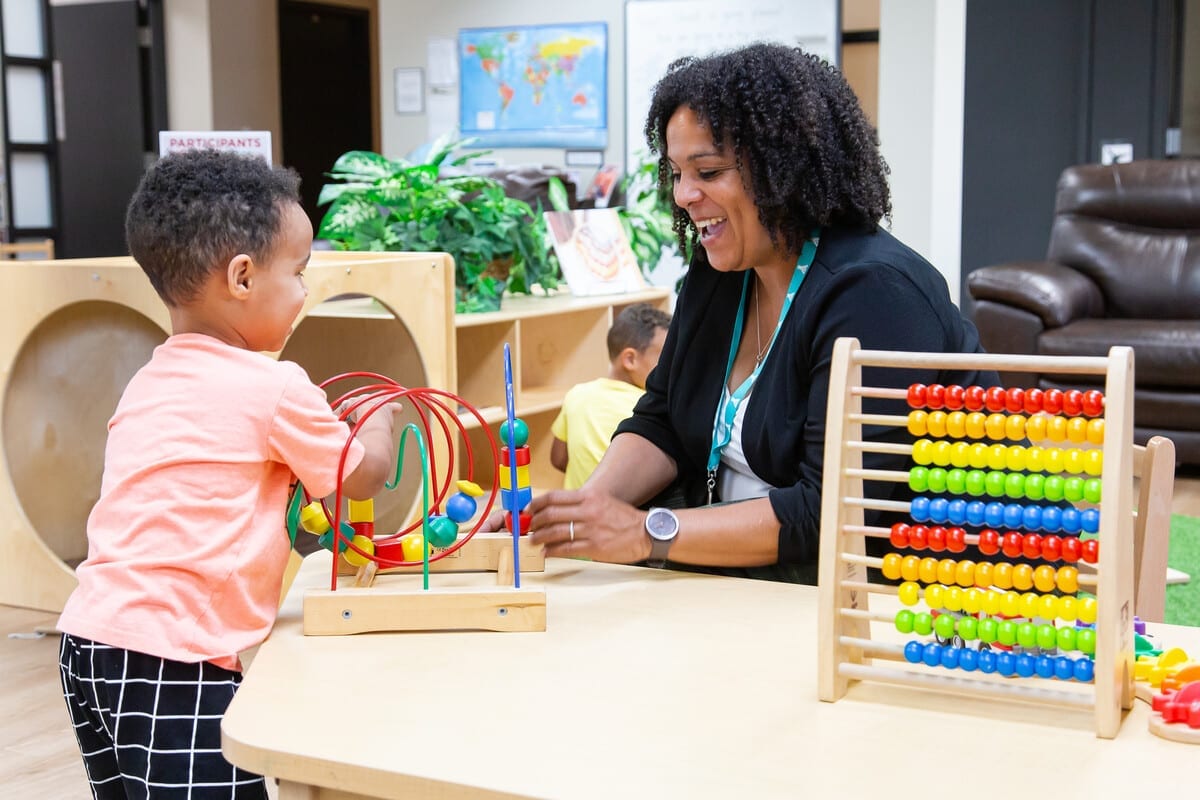
Affordable, plentiful child care is critical for Waterloo Region families. We’ve continued rolling out funding from the Canada-wide Early Learning and Child Care agreement in 2024, lowering fees across the community. We’re also working on using Region-owned land for child care, and partnering with community organizations to deliver culturally-responsive child care options. |

Providing connection

We’re continuing to support active, fulfilling lives for people living with dementia. For example, the Young Onset Dementia Association (YODA) at Sunnyside home is for people younger than 65, in the early stages of memory loss. They gather to connect and share experiences. It provides a routine and a chance to feel like themselves.

Sharing resources

We have 11 library branches offering services, programs and events in the Townships of North Dumfries, Wellesley, Wilmot and Woolwich. These Region of Waterloo Libraries serve as safe, welcoming spaces for community members. In September 2024, The Township of Woolwich and the Region of Waterloo celebrated the grand opening of the Breslau Branch in the Breslau Community Centre. Breslau is the first new library branch to open in the Region in over 40 years.

Ensuring learning and growth for all
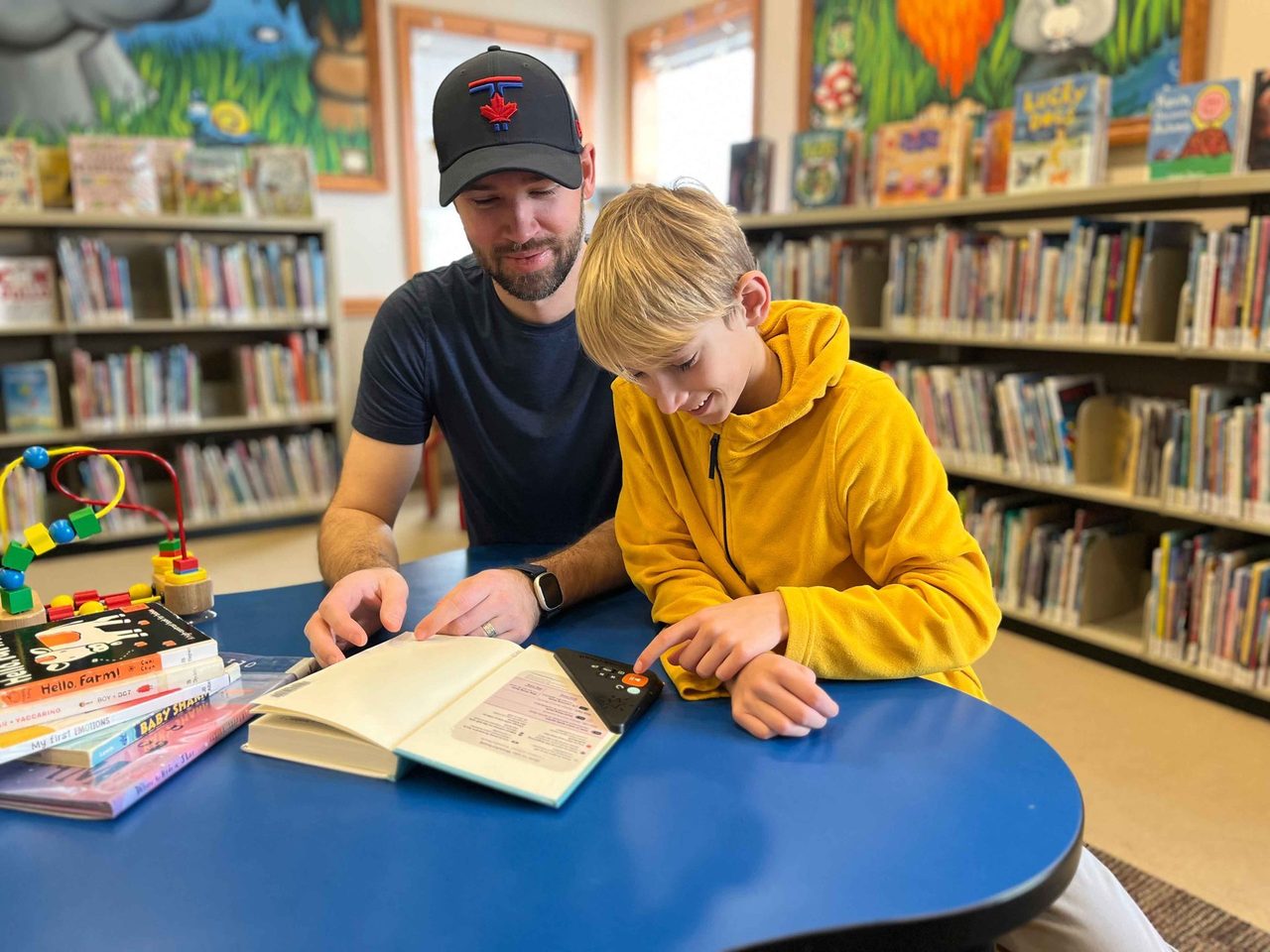
Region of Waterloo Libraries is working to give everyone — regardless of income or background — an opportunity to learn, grow, and succeed. Programs include literacy, job training, arts workshops, and financial seminars. Library catalogues provide access to accessible technology, recreational sites, wellness supplies, and hobby kits.

Supporting healthy communities
Public Health is adapting to meet residents where they are, supporting people in spaces where they can more easily and comfortably access health services. We opened a new Public Health clinic in 2024. We met with residents in more community spaces and supported people who may have previously experienced barriers to health. Better access to health services means better overall wellbeing for the people of Waterloo Region.
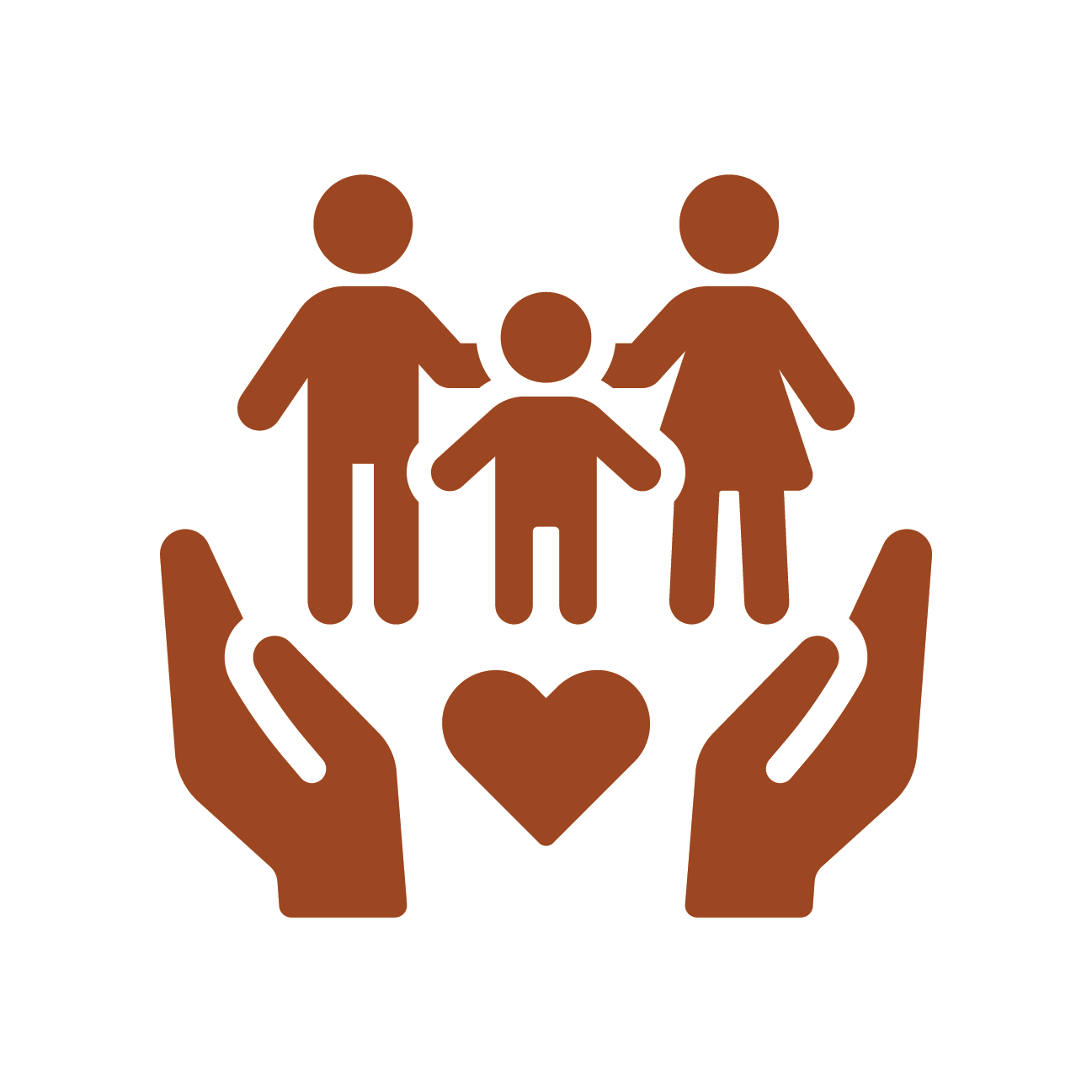
Advancing community safety and wellbeing

We support community-led projects that help make Waterloo Region a place where everyone feels safe, welcome and valued. This summer, we announced another $2.89 million for projects through our Upstream and Community Capacity Building Funds. These projects focus on prevention and supporting grassroots change-makers.
Guided by the Community, Safety, and Wellbeing Plan (CSWP), we’re also bringing together “community action tables”. Here, Regional staff and community partners work to address CSWP priorities to combat hate, address intimate partner violence, gender based violence, and missing and murdered Indigenous women, support community mental health and addiction needs together, and create safe and inclusive spaces in the community.
Upstream impacts since 2021:
$12M
in Regional funding
116
community-led projects supported

Investing in food security




One way to create more food security in our community is through farm and garden projects. In 2024, we partnered with Wisahkotewinowak, a local urban Indigenous garden collective, to build a new community garden across from Schneider Haus National Historic Site. The new garden has space for Crow Shield Lodge, an Indigenous land-based education and healing organization, and for Muslim Social Services of Kitchener-Waterloo.
This exciting collaboration includes education for the gardeners on sustainable gardening, seed saving, soil management and planting diversity. By investing in community-led gardens and education, we are working alongside different racialized communities so people can access sustainable food sources, gain skills and connect socially.
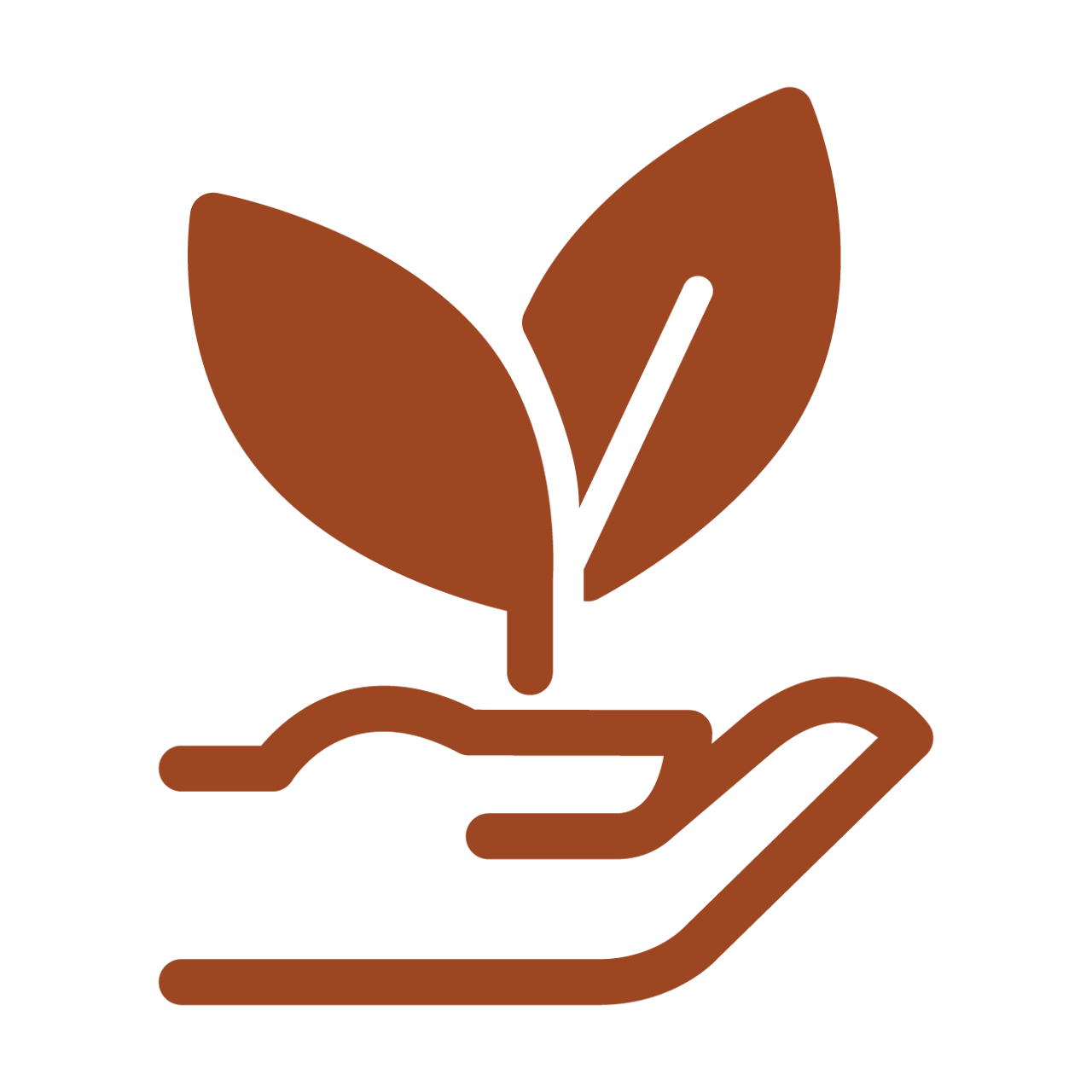
families received garden crops through White Owl Native Ancestry food share program — just some of the many people receiving produce from this garden
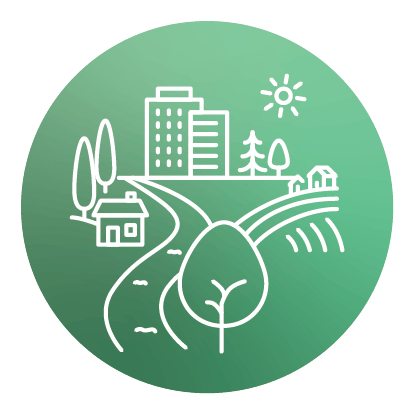

Climate aligned
growth
Climate aligned
growth
In Waterloo Region, invention and ambition are in our DNA and we’re putting our innovative spirit to work in the areas our community needs it most — including climate change and environmental stewardship.


The natural world is under pressure and Waterloo Region is no exception. Our community is facing unprecedented challenges due to global warming — hotter temperatures, heavier rains, severe storms and increasing pollution.
We can work together and do our part to ensure Waterloo Region has a healthy environment for everyone, with clean air, water, land and biodiversity. A community where people have climate-friendly ways to get around. We’ve already reduced our region’s greenhouse gas emissions below 2010 levels, but much more work is needed to reach our 80 per cent reduction target by 2050.
How we’ve built a brighter future in 2024:
Expanding public transportation
Growing accessible transit
Linking the community with trails
Supporting active transportation
Using energy sustainably
Creating greener energy
Protecting our natural environment
Collaborating on heritage conservation

Expanding public transportation

We continued to improve service in 2024 to meet the needs of our rapidly-growing community and make it easier for people to get around Waterloo Region. We increased service to the Cambridge Business Park and surrounding area, boosted connections to the Region of Waterloo International Airport, and added late-night service between Waterloo and Kitchener. And we make progress on our important climate change goals every time someone chooses public transportation. As our ridership grows and changes, GRT is also evolving to meet the demand.

3
new bus routes added

9,500
tonnes of CO2 emissions saved by riders using GRT

Growing accessible transit
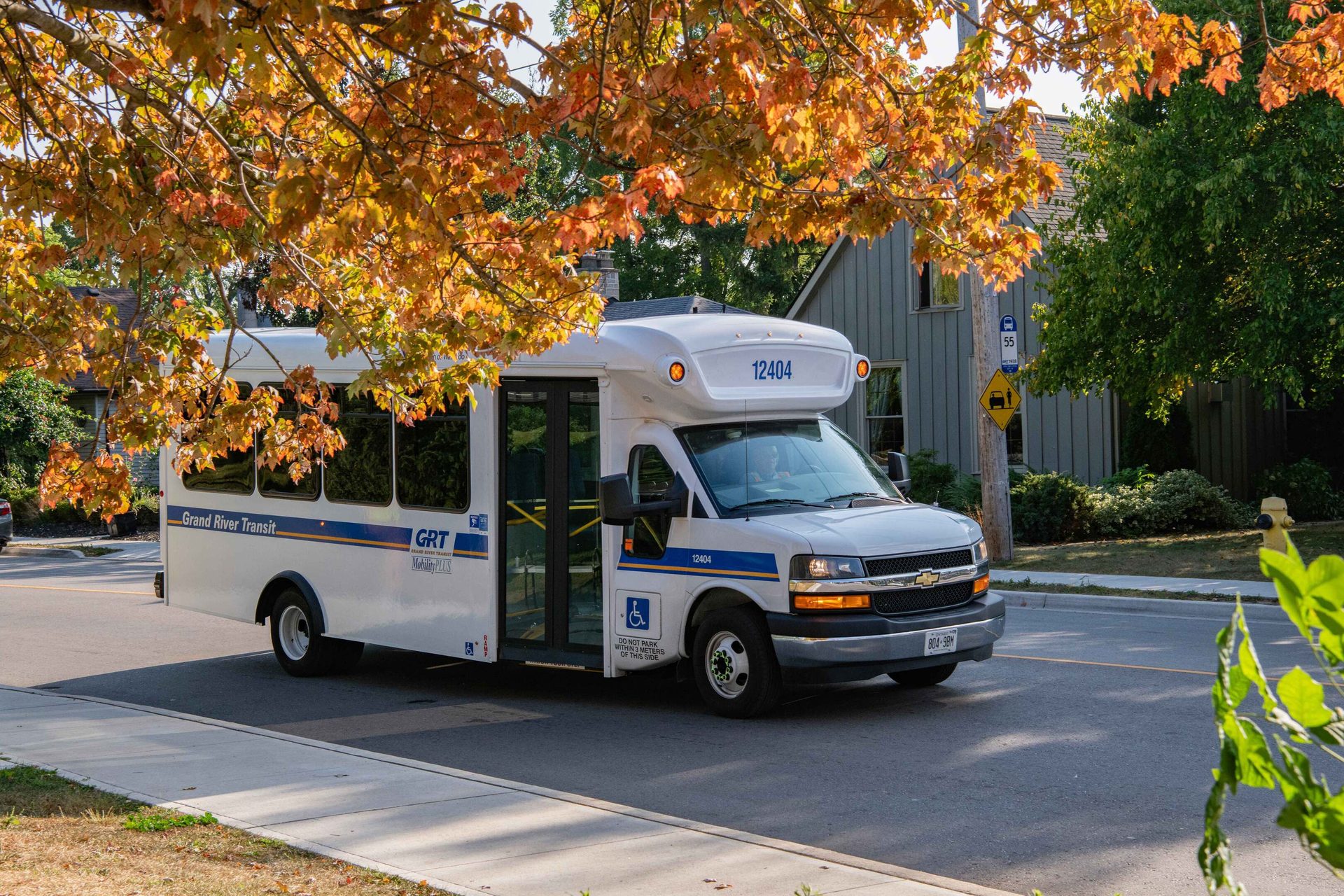
We want public transportation to be an easy option for as many people as possible. Everyone deserves good transportation! We’re proud that ridership continues to grow on MobilityPLUS, GRT’s specialized transit service for people who are unable to use conventional transit due to a disability.
We made significant progress in 2024 to decrease the number of undelivered trips and improve our system’s efficiency through software updates and other operational adjustments.

Linking the community with trails
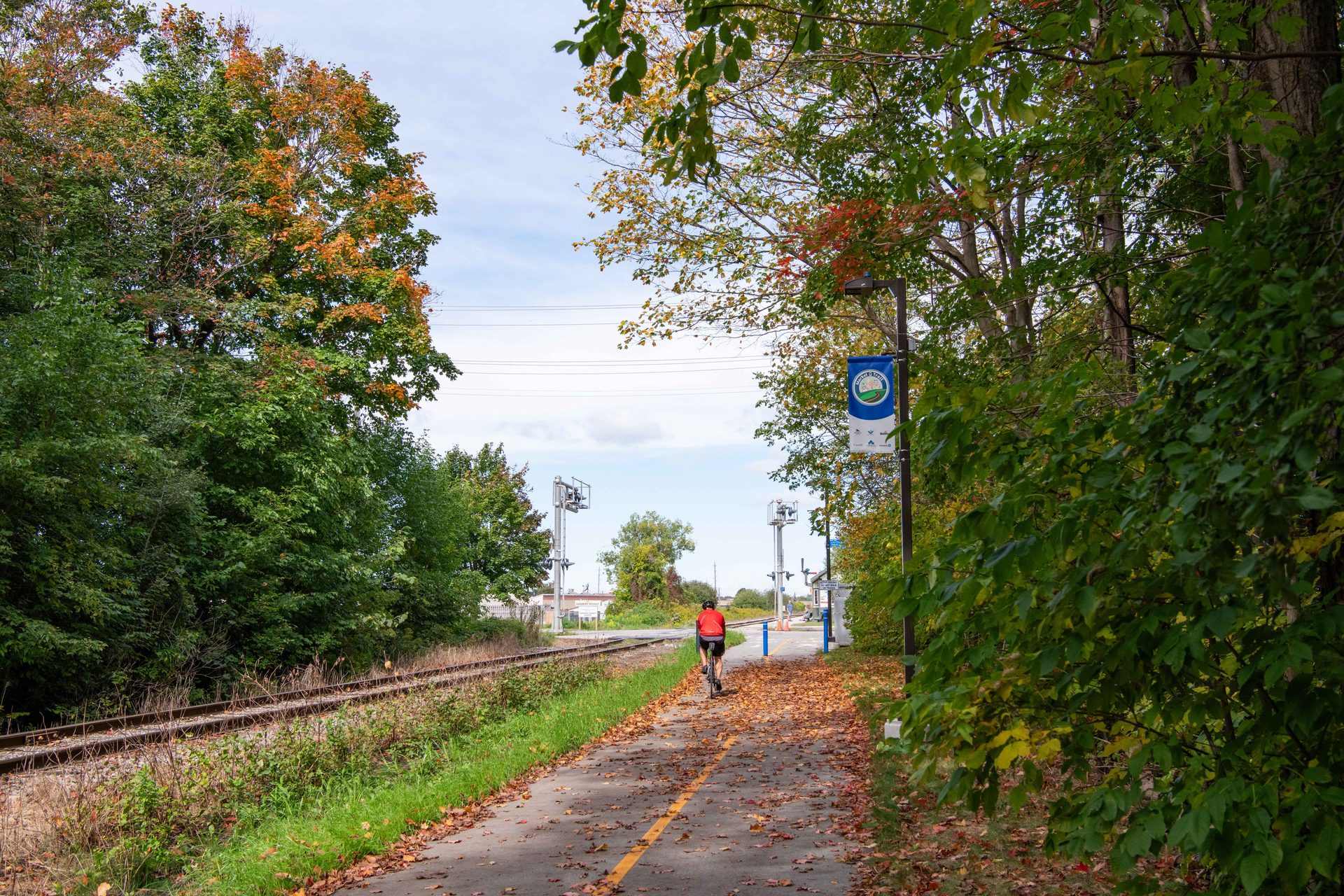

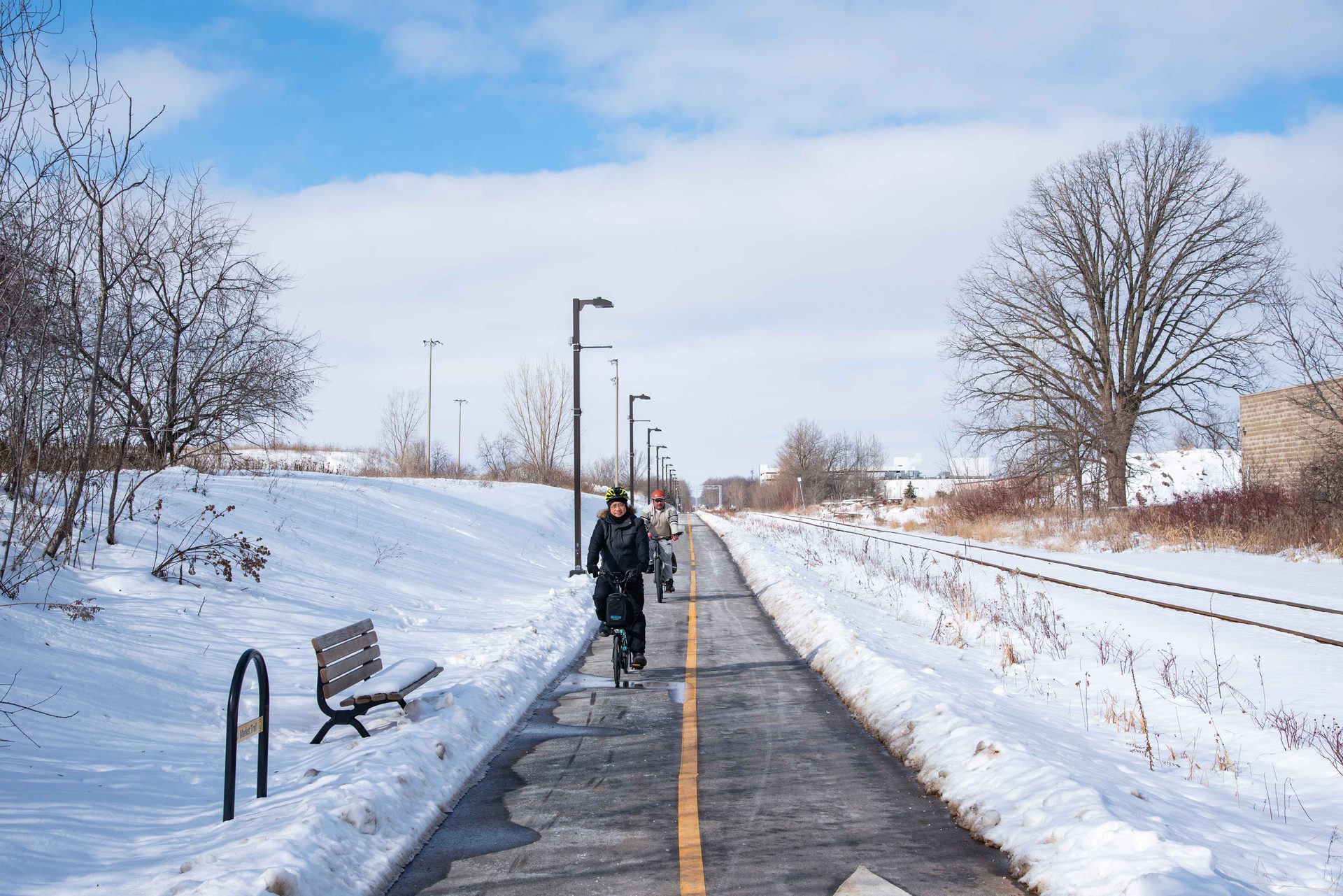

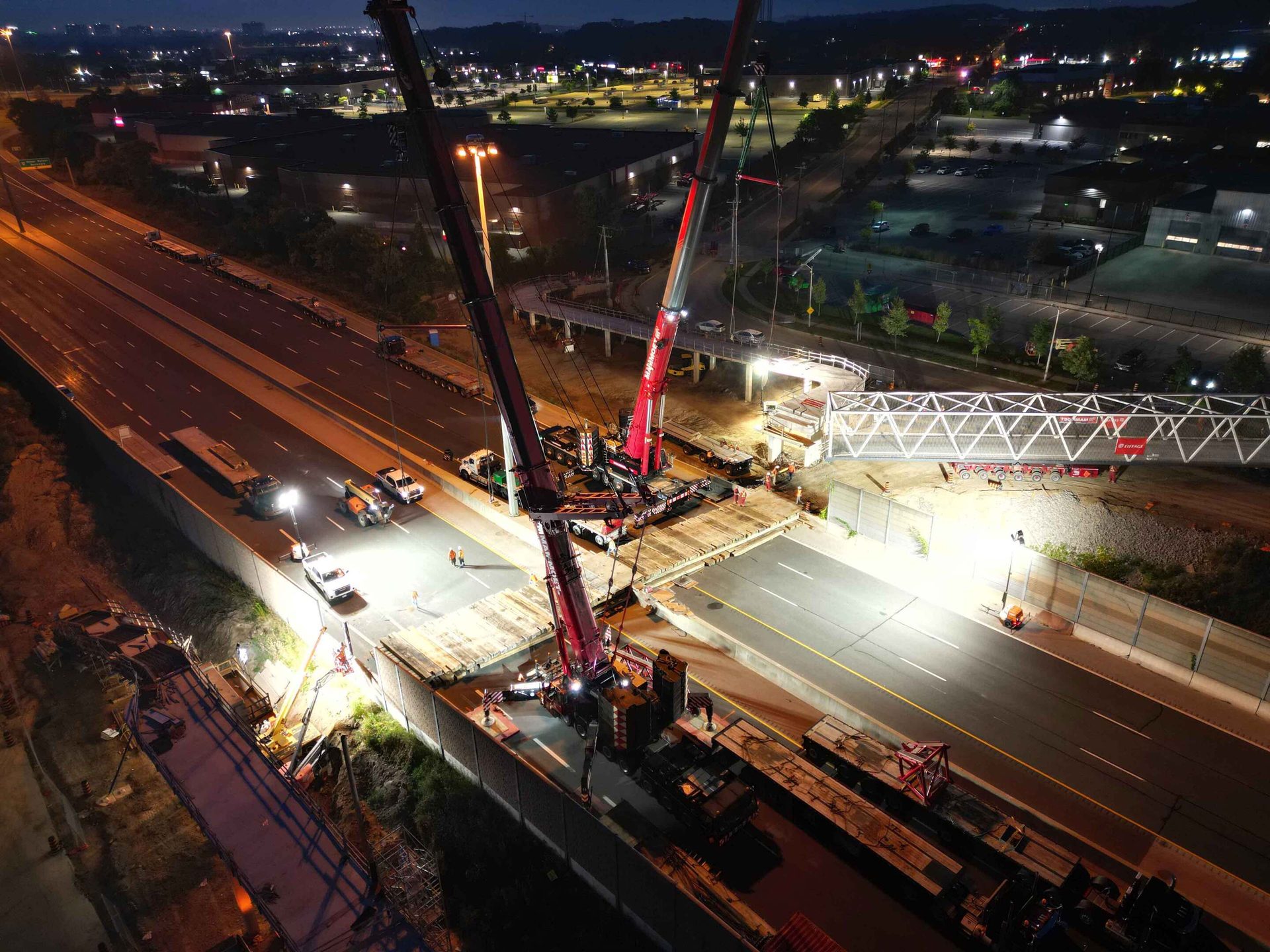

Community members are embracing the Region of Waterloo’s active transportation links, so they can walk, bike or roll where they need to go.
The Region’s Market Trail, connecting Northfield Station in Waterloo to St. Jacobs Farmers’ Market saw record use in 2024:

Supporting active transportation
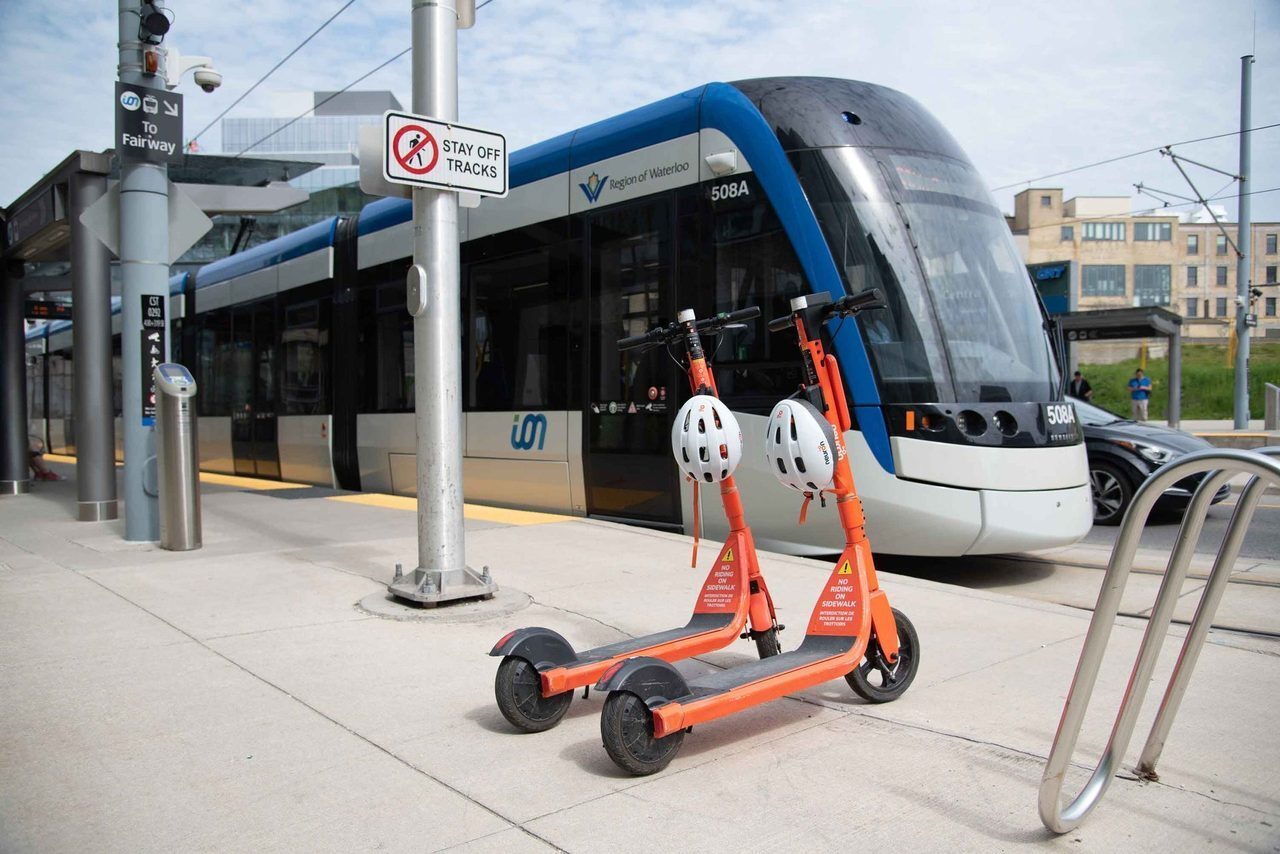
The Region’s shared e-bike and e-scooter program marked another year of growth.
- The network increased to more than 60 square km of service area and 380 stations, connecting Cambridge, Kitchener and Waterloo
- Over 280,000 km travelled by nearly 30,000 people
- Up to 9,850 kilograms of carbon emissions diverted by those trips
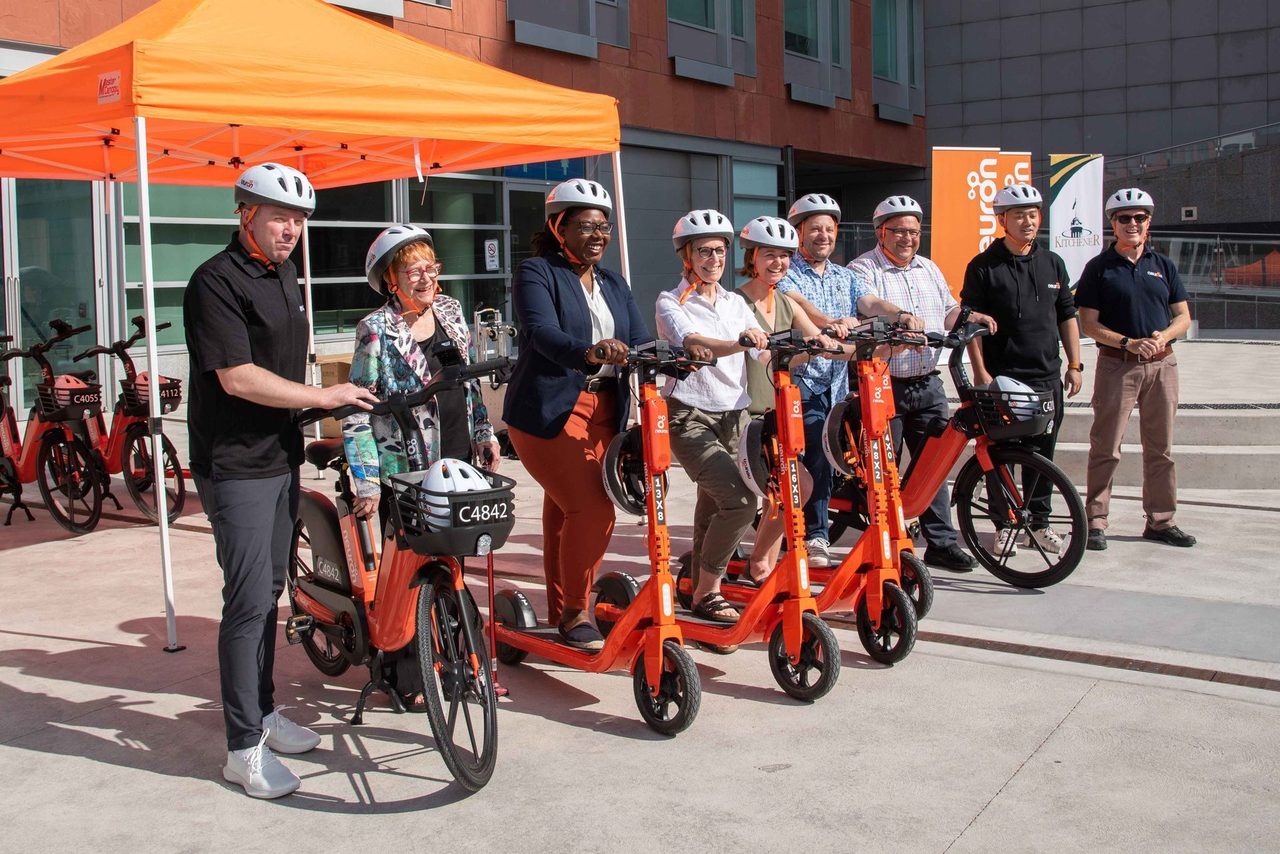

Using energy sustainably
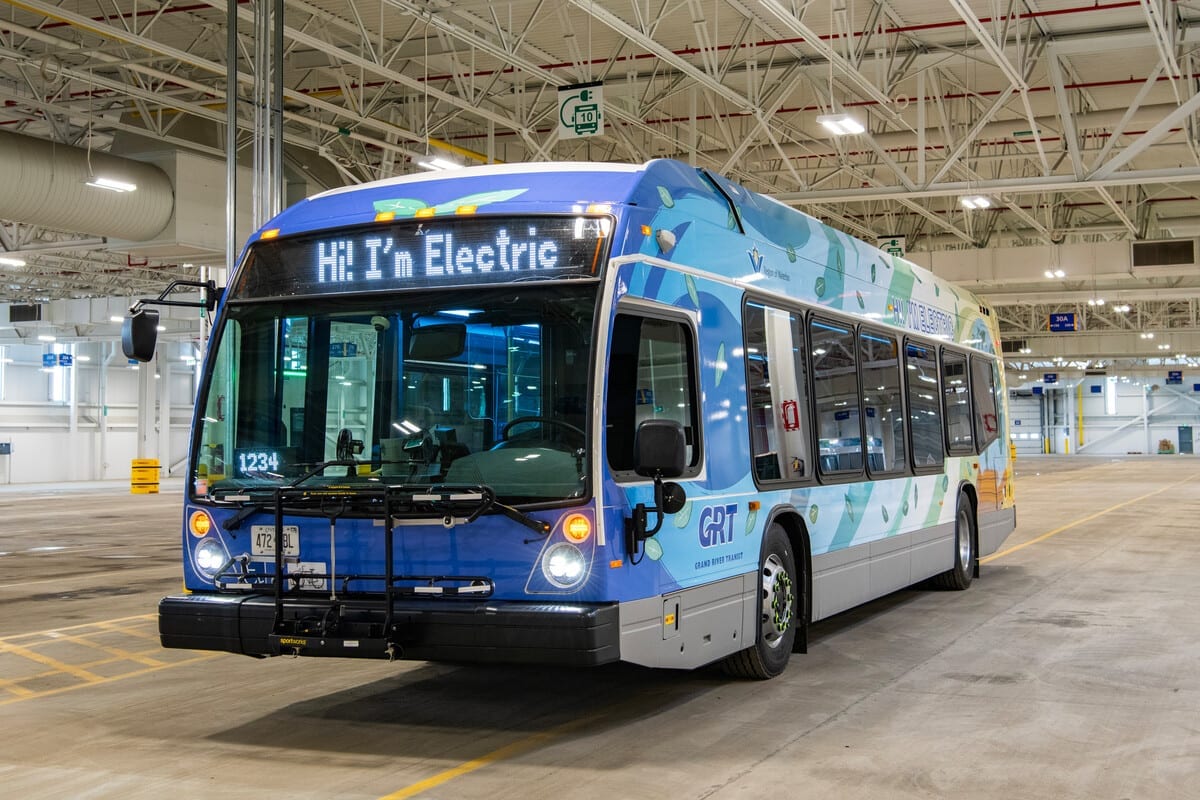
At the Region of Waterloo, we are choosing smart investments that use energy efficiently and result in long-term savings. In 2024, we made progress on our long-term goal to reduce carbon emissions and protect our environment.
- GRT launched its electric bus pilot.
- Since 2019, the Region has secured over $8 million in incentives and grants to implement 237 energy conservation projects, 27 of which were completed in 2024. This includes the development of three new, net zero carbon apartment buildings for Waterloo Region Housing. These efforts have surpassed our sustainability targets and resulted in:

Creating greener energy

Not only is the Region working to save energy, we’re also working to create energy in sustainable ways, for a greener future. We’re doing our part to adopt more sustainable energy sources and generate our own power.
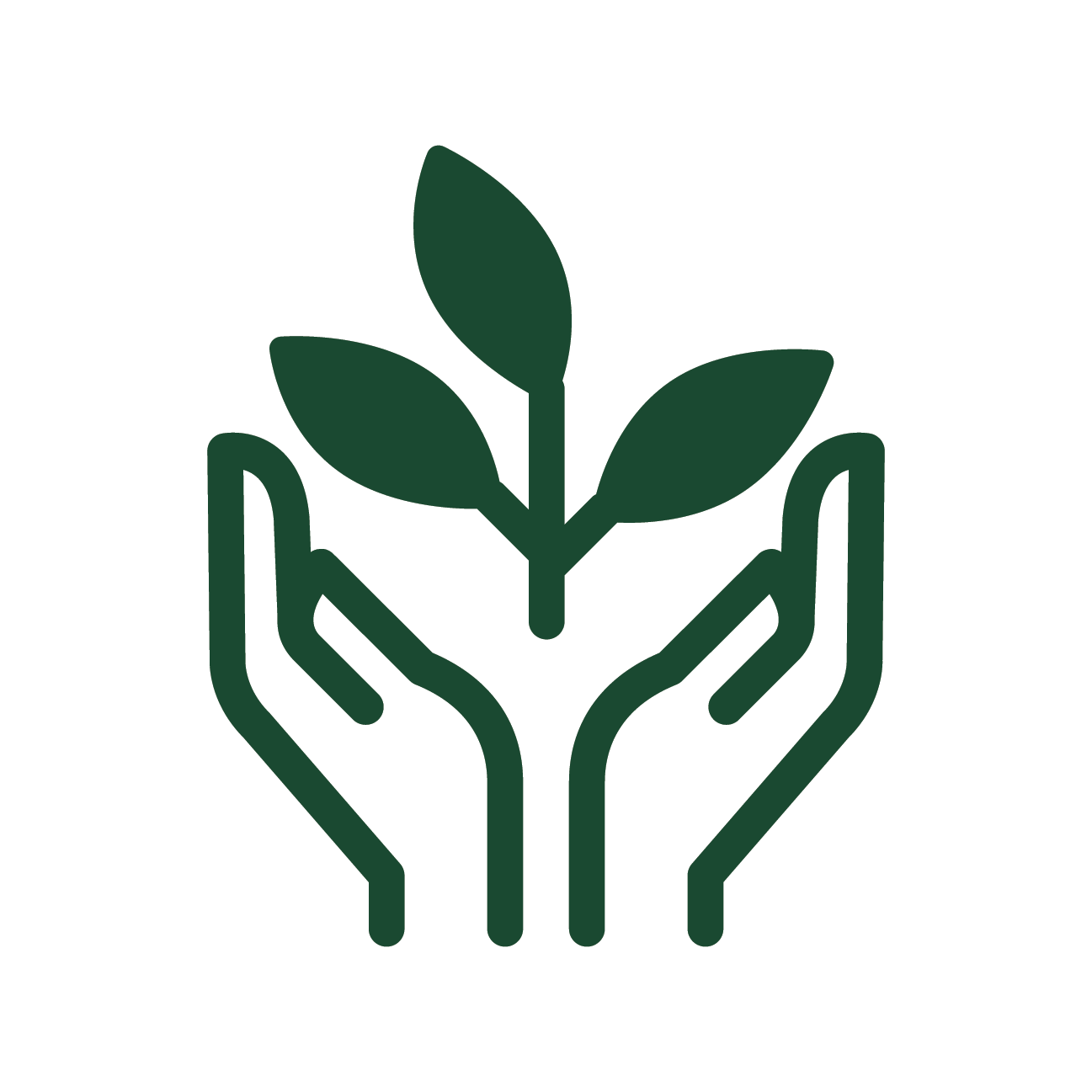
Protecting our natural environment
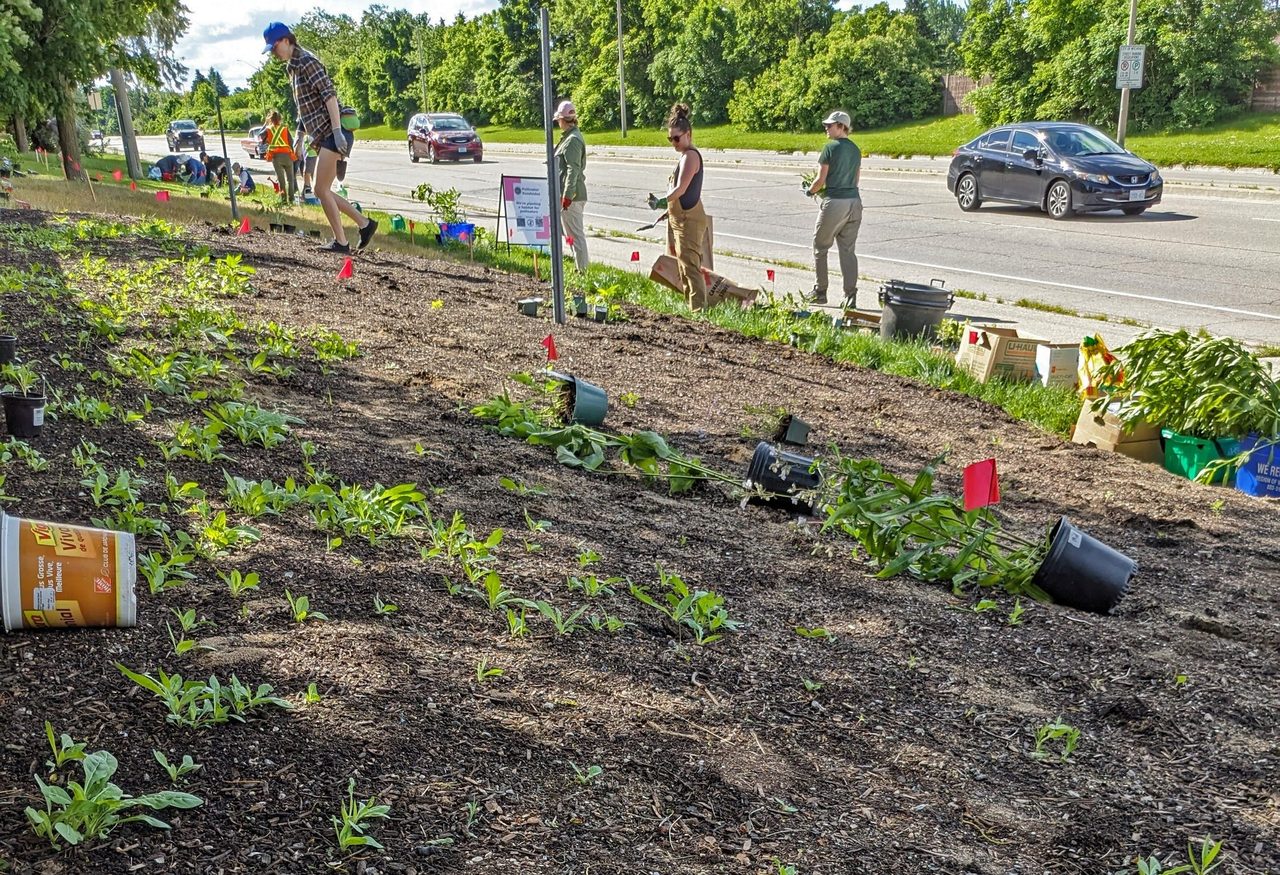
Volunteers plant native perennials along the roadside.
We’ve worked alongside community partners and area municipalities to enhance and protect our natural environment in new and creative ways. Significant impacts in 2024 include:
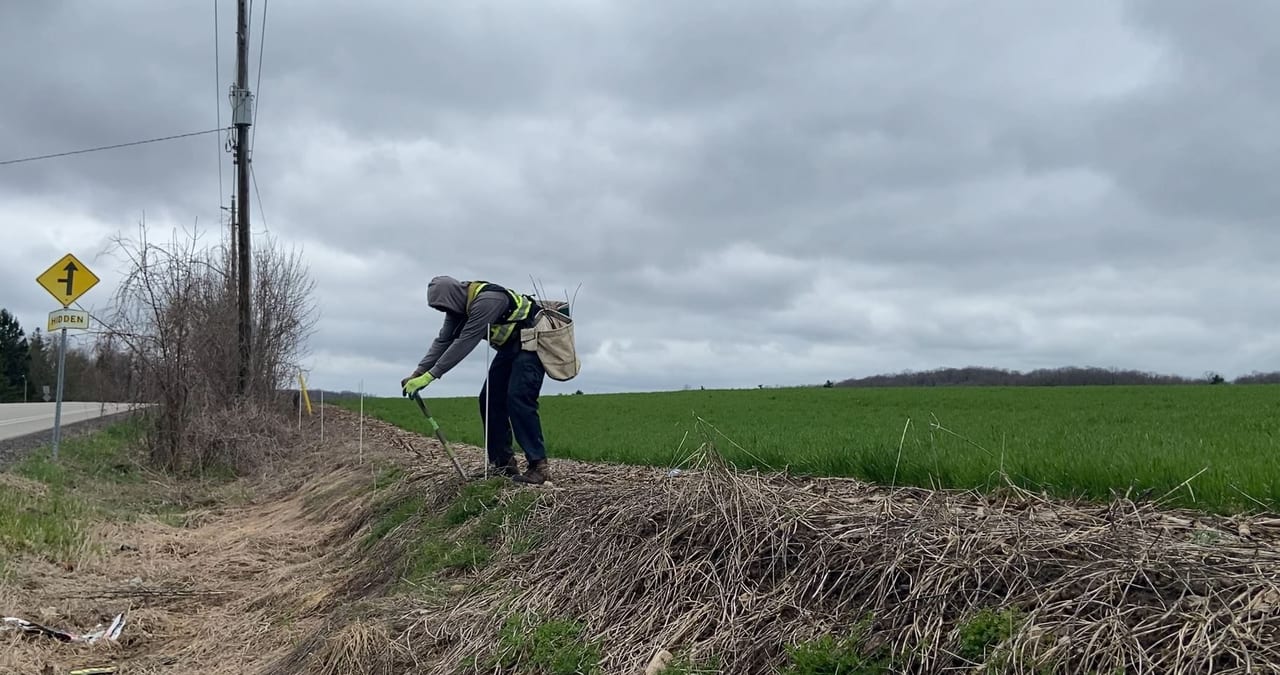
A volunteer plants native trees along a roadside in Woolwich.

Collaborating on heritage conservation




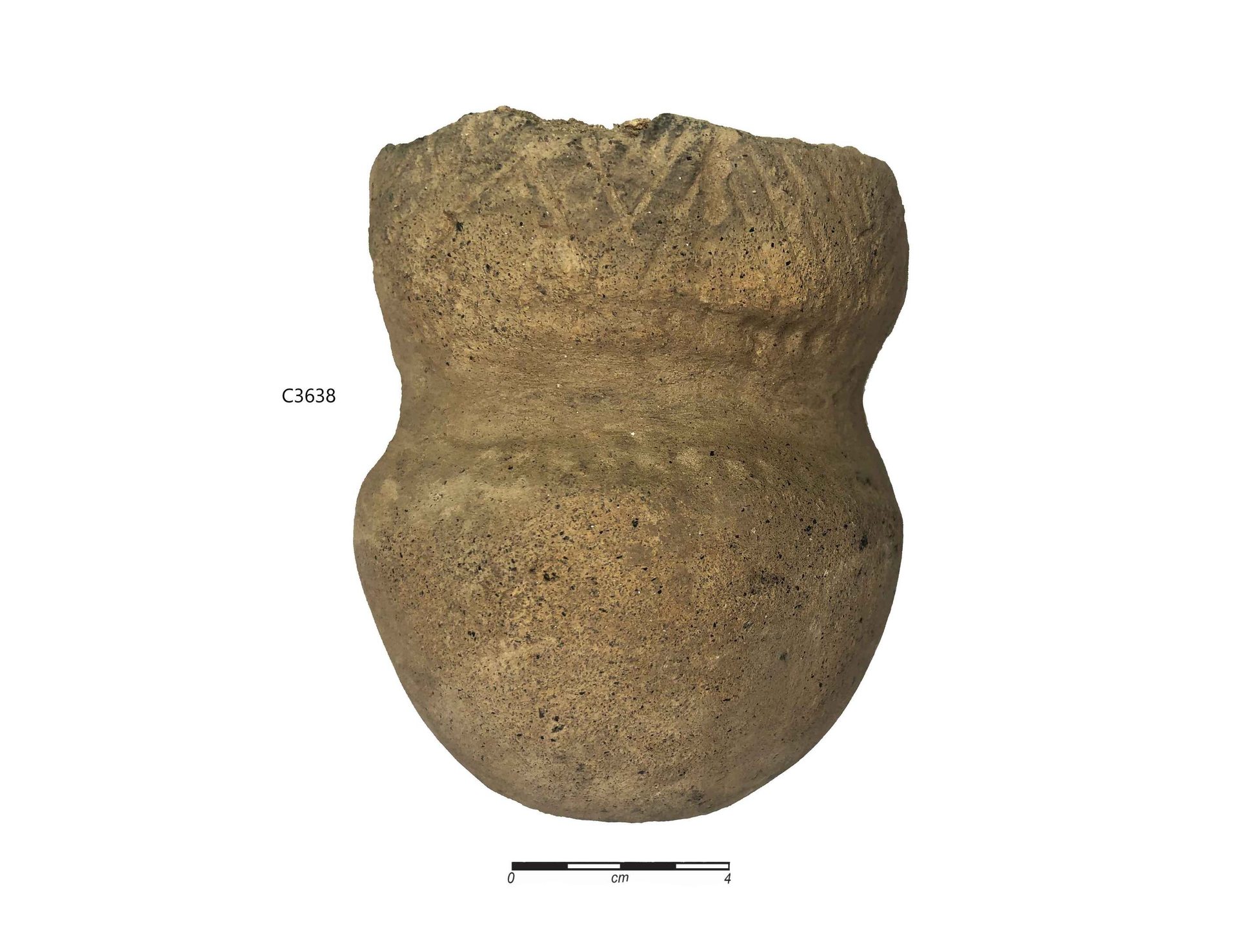

In 2024, the Region’s work on Fischer-Hallman Road in 2020-2023 was recognized with awards from the Ontario Public Works Association and the Municipal Engineers Association. The Region collaborated with several Indigenous communities and worked with archaeologists, consultants, and contractors to preserve local artifacts discovered on the site. What they didn’t expect was the extent of the findings. These findings helped reconstruct life in a Late Woodland village 600 years ago.
Collaboration on this project was key — highlighting how development can be balanced with heritage conservation. The collaborative archaeological assessment model used by the Region and its Indigenous partners is now being adopted by other municipalities in Ontario.


Resilient and future ready organization
Resilient and future ready organization
An organization needs to be future ready in order to thrive in a rapidly changing world. As Waterloo Region’s population grows, we face new pressures. We must evolve our services, infrastructure, and ways of making decisions so we can meet whatever challenges lie ahead.
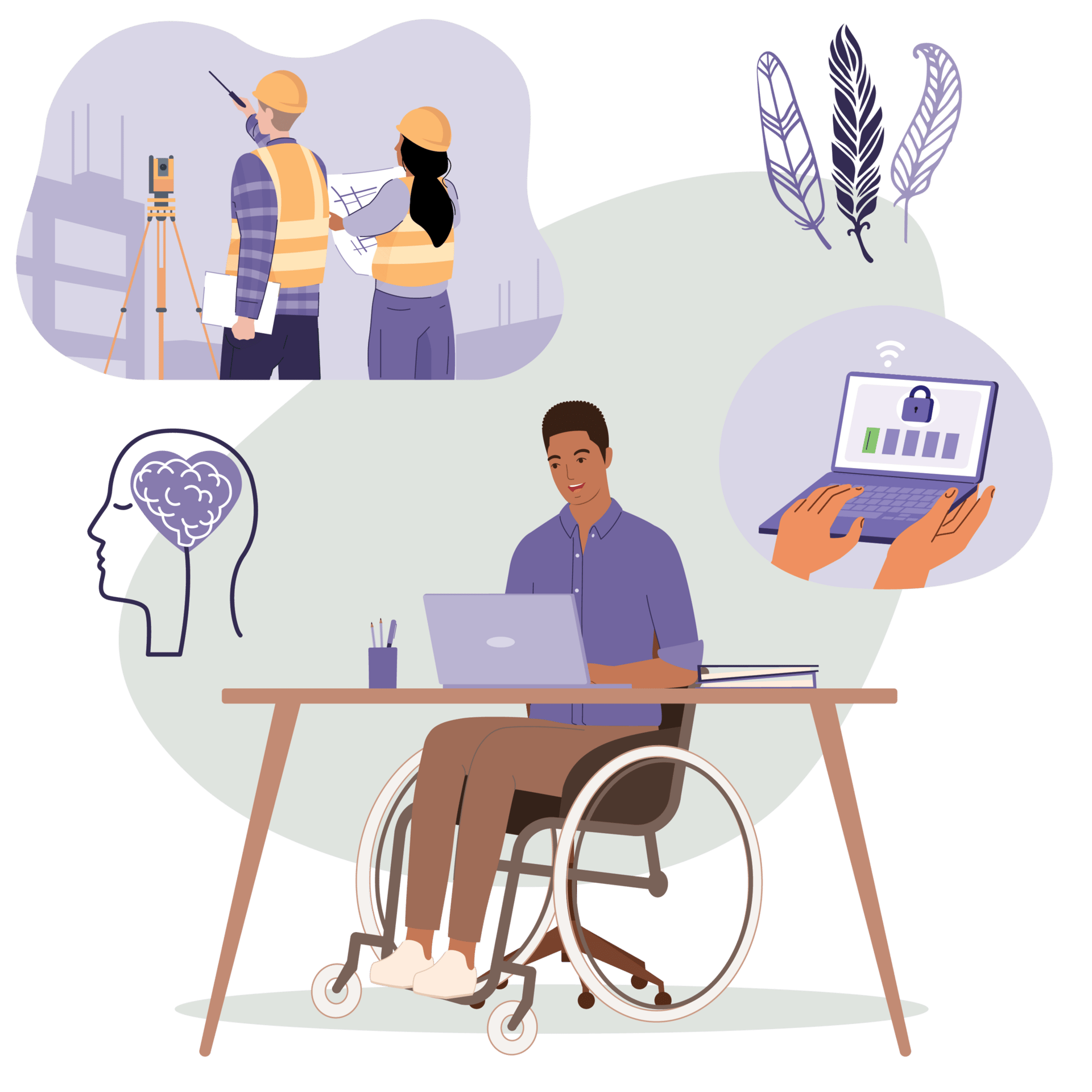

We need to innovate, be efficient, and build resilience to ensure we are prepared for growth. To do that, our employees need to feel valued and know that they belong. They need to be supported to serve residents with compassion and care, to build trust and confidence in what we do, and to drive this organization forward. They need a safe space for bold ideas and innovation, based on data and other ways of knowing.
How we’ve built a brighter future in 2024:
Supporting employee wellbeing
Embedding Indigenous ways of knowing
Creating safe spaces
Celebrating Indigenous voices
Protecting your essential services
New way of working to meet community needs better
Making services more accessible

Supporting employee wellbeing
When you call 911, you rely on emergency crews to respond with compassion and care. But in order for our paramedics to provide the best care for you, they have to be cared for too. Paramedics often experience high stress and trauma, and this can impact their mental health.
The Region’s peer support program helps to build resilience and maintain service levels by having staff take good care of each other.
Through the program, paramedics provide emotional and psychological support to their colleagues. Team members share similar lived experiences with each other and receive guidance from trained peers.
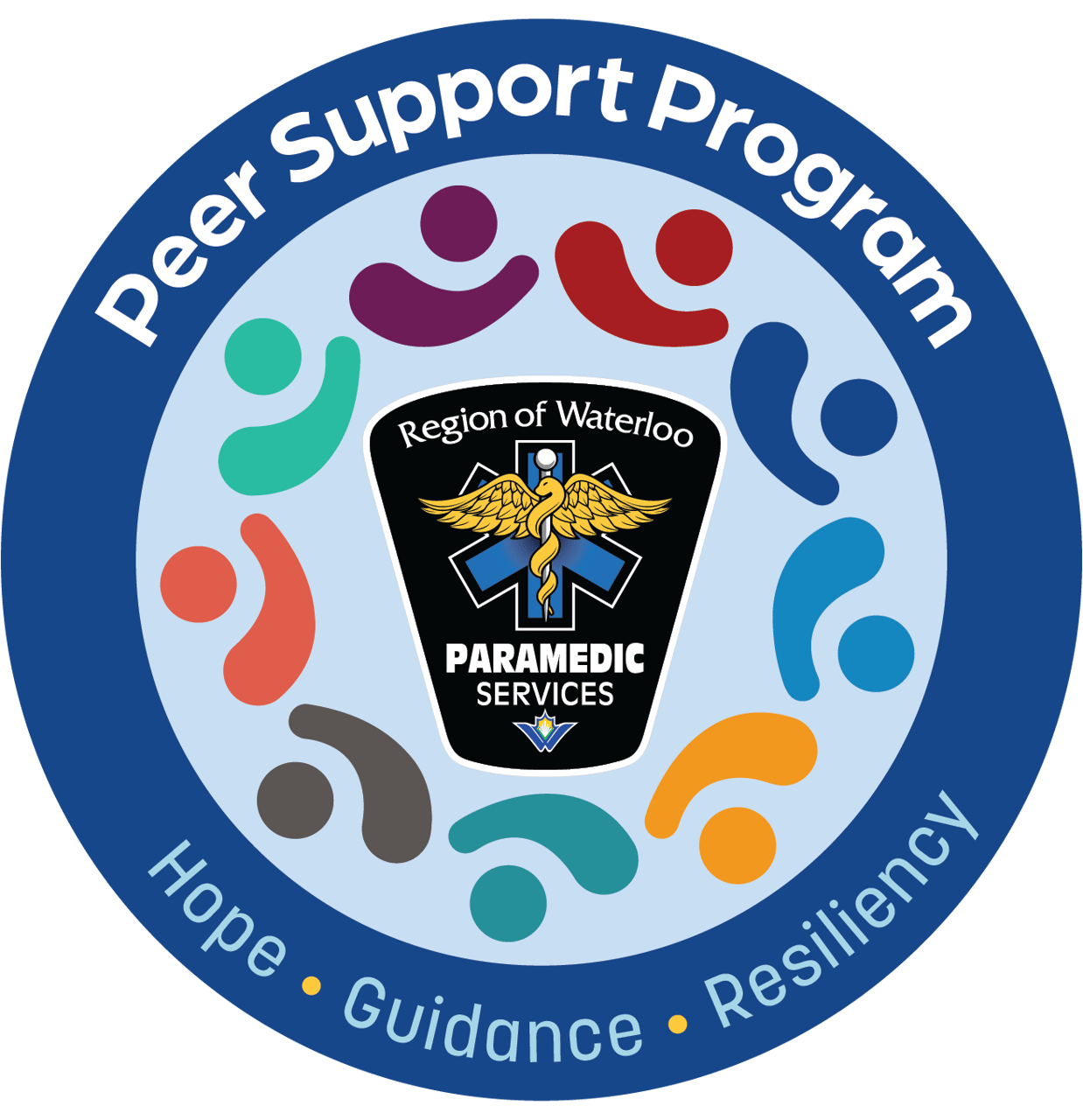

Embedding Indigenous ways of knowing
Indigenous Ways of Knowing are vital to Reconciliation, and they help communities grow in healthy ways. They invite us to learn from all creation, think holistically, and plan for future generations.
This year, the Reconciliation Action Partnership (RAP) drew from Indigenous traditions including the Haudenosaunee White Pine Tree of Peace and the medicine wheel to develop a plan that will guide their work. Medicine wheels allowed the group to plan and balance their actions across all stages and seasons.
In November, RAP’s new Pathway Forward was shared at a Community Feast and will guide the Region and municipalities as they work alongside the Indigenous community.
RAP is a group of municipalities working together to embed Reconciliation into our community and government.

Creating safe spaces
Sweetgrass is one of many plants that, when lit, can have a positive effect on you and the space you’re working in. Smudging is a deeply rooted cultural practice for many Indigenous peoples. It is a way to connect with tradition, ancestors, and the natural world, and to foster a sense of spirituality, healing, and reflection.
This year the Region adopted a new smudging policy that respects and encourages this practice, ensuring that everyone who visits or works in a Regional facility can bring their whole selves into the space.
It is an important step toward creating a more inclusive environment as we commit to integrating Indigenous knowledge, traditions, and values into our programs, policies, and spaces, aligning with the Truth and Reconciliation Commission’s Calls to Action.

Celebrating Indigenous voices

The Truth and Reconciliation Commission of Canada’s calls to action include preserving Aboriginal languages as a fundamental and valued element of Canadian culture and society.
A new installation at our headquarters that greets you with 14 Indigenous languages in the Region is one of the ways we are advancing Truth and Reconciliation at the Region.
This greeting recognizes the diversity of Indigenous voices and carries a message of change: away from a history where not all were welcomed in formal government spaces or where Indigenous languages were frowned upon, and towards a new era where doors are open with an explicit welcome to First Nations, Indigenous, and Métis peoples.

Protecting your essential services

While a growing online presence creates new opportunities to serve you better, it also brings new risks. The amount of money businesses spent recovering from cyber security attacks has doubled in the past two years, which shows the importance of being prepared. While the Region has security technologies and emergency plans in place, practicing these plans in a mock situation strengthens our response and builds resilience.
In 2024, the Region ran a simulated cyber incident exercise to ensure we minimize the risks and maintain essential services in the event of an actual incident. We also continue to educate and train staff on how to help protect services and the organization from a cyber incident.

2,500+
hours of cyber security training completed by staff

10,000+
phishing simulations completed

New way of working to meet community needs better


Renderings of 1388 Highland Road West
For many families, it can be hard to find an affordable home with child care nearby. The Region works in many ways to address these challenges, and in 2024 we added a new way — leveraging the land we own for mixed-use development. We provide the land to the developer, and the developer makes a percentage of homes affordable while designating space in the development for child care.
This creates more sustainable, walkable, and vibrant communities. We began planning two new developments this past year, one at 1388 Highland Road West in Kitchener and another on 30 Lauris Avenue in Cambridge. About thirty percent of the units in each community will be affordable and licensed child care will be on site.

Making services more accessible

As the region’s population grows, so too does the need for accessible services. This goes beyond meeting provincial requirements, to ensuring we are doing everything we can to create the best service experience for all.
Our accessibility plan for the next few years describes what the Region will do to reduce barriers to our services and public spaces for people with disabilities. In 2024, the Region consulted with the Grand River Accessibility Advisory Committee and the community on more than 10 projects, including planned improvements to transit, washrooms, housing, and the budget. We also provided staff training and made improvements to communications media, and public spaces.
